TatEnergyExpo 2024: charging stations, artificial intelligence, robots and Belarusian guests
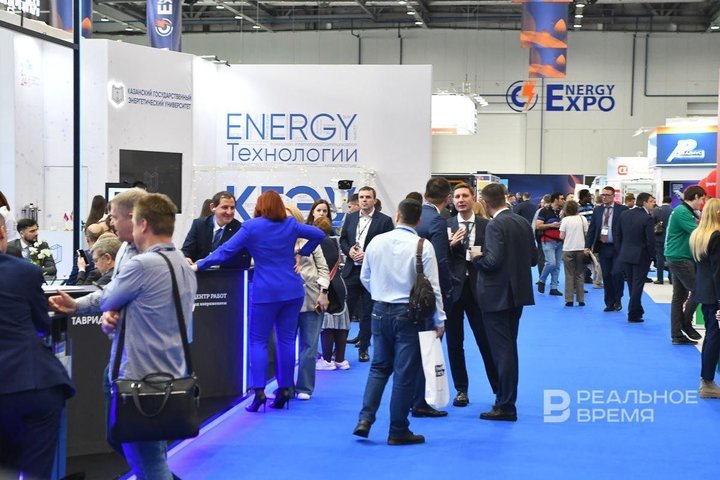
TatEnergyExpo 2024 exhibition, which opened on 3 April at Kazan Expo IEC, gathered 87 exhibitors. Representatives of 17 regions of Russia and three other countries (Belarus, Kazakhstan and China) brought high technologies in the field of energy and energy efficiency to Kazan. Power generating companies, manufacturers of all kinds of equipment, dealers, related organisations, electric vehicle industry representatives — all of them share their experience at the exhibition and present their solutions. Traditionally, the Kazan State Power Engineering University is seriously represented at the exhibition — a university that trains personnel for the industry and presents scientific developments for its progress. Pictures from the exhibition and a brief overview of the exposition — in the report of Realnoe Vremya.
Smart meters with a Russian flavour and Belarusian import substitution
Walking through the exhibition, one traditionally looks for stands that catch the eye. There were several of them at TatEnergyExpo. For example, the stand of Mir R&D from Omsk, a developer of intelligent electricity metering systems (in other words, smart meters), immediately attracted attention. It is designed in the Russian artistic style, almost painted to match the Khokhloma. There is a colourful tea table with a samovar and cups painted with designs, and the company's employees are dressed in traditional Russian outfits. It's hard not to notice them. Russian style and Orthodox culture, by the way, seem to be really “sewn into the genetic code” of the company: the journalists of Realnoe Vremya happened to hear a story about how the very first building on the territory of the enterprise more than 30 years ago became ... a chapel! And then everything else appeared. At first, Mir R&D specialised in metering devices for oil companies, but now it has been manufacturing household meters for more than 8 years.
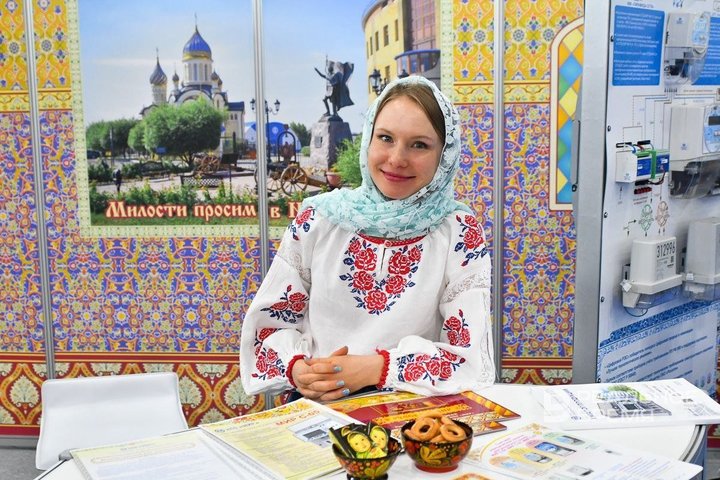
“Now, according to the legislation, meters must be smart. This means that the transmission of data on the consumed electricity will take place without the participation of the consumer himself, automatically. You have manufacturers of such equipment in Kazan, they are our direct competitors," explains Irina Smolnikova, the managing director of the company for the Republic of Tatarstan region. “But, first of all, we believe that there should always be competition, it ensures a healthy market. When there are competitors, each of us tries to do better, better and cheaper. Secondly, now, under the conditions of sanctions, certain supply problems may arise. Therefore, we believe that an electricity generating company should have several supply options. We already operate in Tatarstan — now one of the large power generating companies is already testing our products in a pilot project.”

Belarus landed an impressive landing force in Kazan — as many as seven companies. For example, AES-Komplekt from Minsk is a manufacturer of switching equipment with a voltage of 10 kV. The company started supplying the sanctioned equipment in Belarus a long time ago — almost 20 years ago. They work both domestically and for export — for example, in Tatarstan they provide equipment for the Grid Company and its main suppliers. Their stand has a variety of equipment — from network substations to switches. An example of cooperation with Tatarstan manufacturers is presented right at the company's stand: a digital cell for a substation manufactured by Zelenodolsk Electrotechnical Plant, equipped with Belarusian switches.
“In the last two years, for obvious reasons, we have started a more lively work with Russian companies," says Kirill Nikolaychik, the head of the sales and marketing department of the company. “There are several Moscow companies where we currently supply electrical equipment, and there are your Tatarstan partners. Not so long ago, during the visit of the head of Bashkiria to Belarus, we met with the head of the Bashkir Electric Grid Company, and now we have already planned an exchange of visits with this company and the development of the subject of conversation. The market is expanding for us: many global brands have left Russia, and we can offer a replacement.
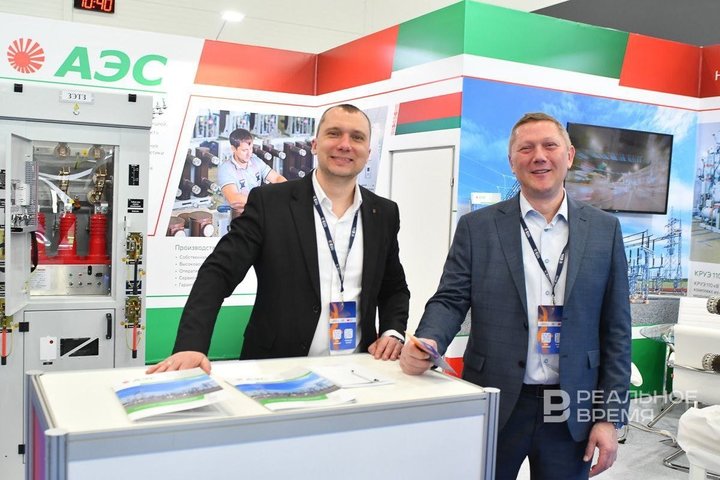
Belarusian engineers use both components of their own production and components from China to assemble their equipment. They began to work out relations with Chinese partners, debug logistics, conclude contracts, and select equipment suitable for price and quality long before it became mainstream — back in 2007.
“The idea that Chinese might be suitable was completely unobvious in those years. Especially in matters of energy and electrical engineering. And now, when sanctions have overtaken Russia, various industries, including energy, have begun to chaotically look for something to replace. Under these conditions, the focus on China turned out to be quite obvious, and we have already had everything ready and organised for this for a long time," says Nikolaychik.
Kazan State Power Engineering University presents developments, organises a scientific slam, and makes friends with colleagues from Belarus
Kazan State Energy University is traditionally strongly represented at the exhibition and forum. Their stand is one of the central ones, a robot is responsible for attracting the attention of visitors, with whom someone is always photographed. This is a robotic crawler platform that is responsible for diagnosing equipment and checking whether everything is in order at the electrical substation. So that the substation employee does not waste time on regular rounds, it will now be possible to run such an installation. It automatically runs along a given route, checks if everything is in order, evaluates the condition of the insulators with ultrasound and ultraviolet light, scans the area with a laser beam and, if anything is not ok, gives an alarm to the operator. In general, everything is like in the song from the movie: “Robots work hard, not humans.”
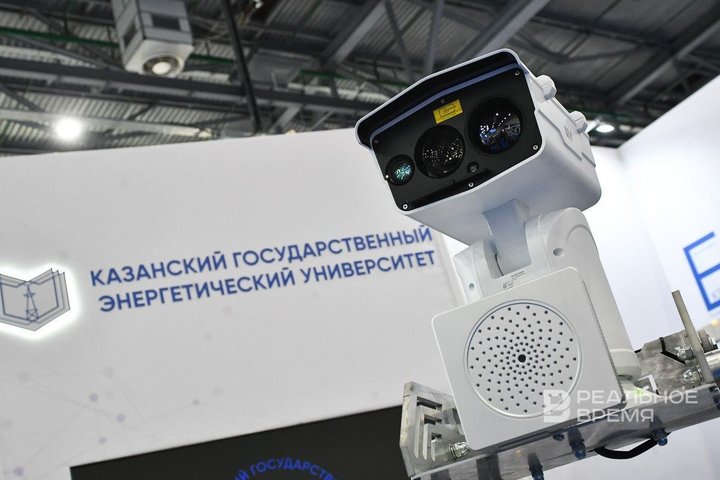
Among other interesting scientific and technical developments presented at the stand is the integrated Smart-Provod (Smart Wire) overhead line monitoring system for power lines. This is a system of sensors installed directly on high-voltage lines, they monitor information about places of breakage or short circuit, about snow sticking to spans, and mechanical damage to the line. The system promptly transmits this information to the server over a wireless network.
Another development that the university presented at the exhibition is an automatic pressure maintenance, recharge and deaeration unit for heating, heat and cold supply systems. It has optimised dimensions that save space in the boiler room or the automated control station. It is assumed that by enhancing the functionality, the installation increases the service life of engineering equipment, saves energy resources, and prevents the appearance of air locks in heating networks.
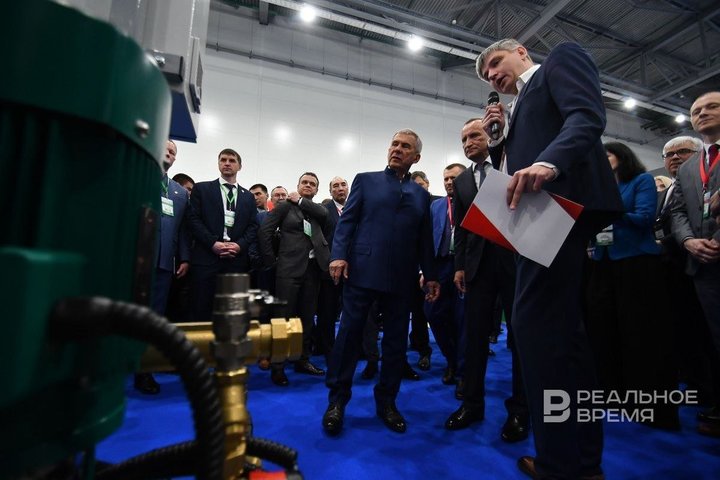
In addition to scientific developments, the university is engaged in active networking at the exhibition and forum: the Kazan power Engineering University traditionally tightly acquires connections with potential employers of its students. For example, on the first day of the forum, a cooperation agreement was signed with KAMA JSC, which is developing the Russian electric car Atom. Under this agreement, a joint laboratory is to be created in which research, testing and debugging of the interaction of an electric vehicle with charging stations will be carried out.
Another important agreement was signed with colleagues from Belarus: a delegation from the Gomel State Technical University headed by Rector Artur Putyato came to Kazan specifically to visit the Kazan State Power Engineering University. The universities agreed to work together in education and science: directions have already been outlined in which Belarusian and Tatarstan scientists can conduct research together.
The university also takes an active part in the business programme of the exhibition: its scientists act as speakers at a number of events. Also, the university traditionally acts as one of the organisers of the Youth Day of the forum — it is held on April 5, and within the framework of it, numerous students have the opportunity to communicate directly with potential employers, present their ideas and developments, participate in a scientific slam, a quiz and even a thematic game by the standards of What? Where? When?. The rector of the university, Edward Abdullazyanov, comments on the reason for such activity of the university to Realnoe Vremya:
“If you noticed, we show new projects every year and never repeat ourselves. We are a university specialising in energy: there are only three such universities in Russia — Moscow, Ivanovo and ours, Kazan. Participation in the forum gives us contacts, the opportunity to communicate with manufacturers more closely, to find out their plans. Education and training should not be divorced from production! After all, we work for them — we need to know what companies are focused on, in which direction to move with them. We work with them in unison, we carry out complex work. Here, at the forum, our students and teachers have the opportunity to see a lot, get acquainted with interesting developments, and notice something for themselves. We would like our young people to feel what it means to be an energy engineer, to have the opportunity to express their thoughts, their ideas — they get such an opportunity at the forum. Any new technology, new idea is zero without human capital. Cadres are the key. The future of not only the energy sector, but also our country as a whole, probably depends on what kind of personnel we train and how they work.
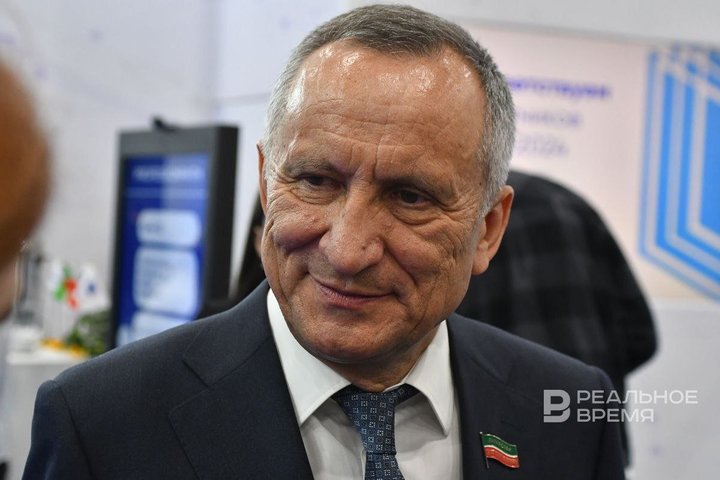
Grid Company outstripped everyone by the area, Tatneft performed with restraint
The stand of Grid Company JSC is freely spread out in the most passable places, in the vanguard of the exposition. It shimmers and sparkles, occupies the largest area at the exhibition and has gathered almost a dozen and a half partner manufacturers under its banner. At this year's exhibition, the company relied on innovation, artificial intelligence and the introduction of neural networks into the work of the enterprise. After all, 2024 has been declared the Year of Scientific and Technical Development in Tatarstan.
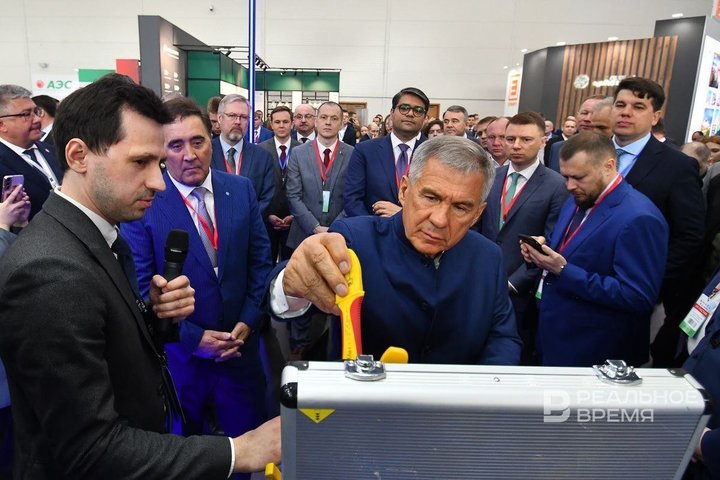
Accordingly, Grid Company showed all the best at once. They demonstrated her own developments — for example, with the project of preventing energy theft based on artificial intelligence in the company, they won the Grand Prix of the Energy Efficient Equipment and Technologies competition in the nomination The Best Project in the Field of Digital Technologies in the Field of Energy. They boasted about the achievements of their partners from the Iskra-Volga Technology Park: Grid Company comes up with solutions, and engineering contractors implement these ideas. So at the stand of Grid Company, you could see robots, technical solutions (for example, equipment for the production of live work), intelligent systems for diagnosing power grids, smart meters, mega-smart controllers, and much more. And all this is constantly implemented into real work.
Other major Tatarstan players in the energy sector are also present with large stands. Tatneft's stand is rather restrainedly decorated — laconic but stylish, it presented a number of environmentally oriented solutions. Gazprom also took up a lot of space with a very restrained exposition.
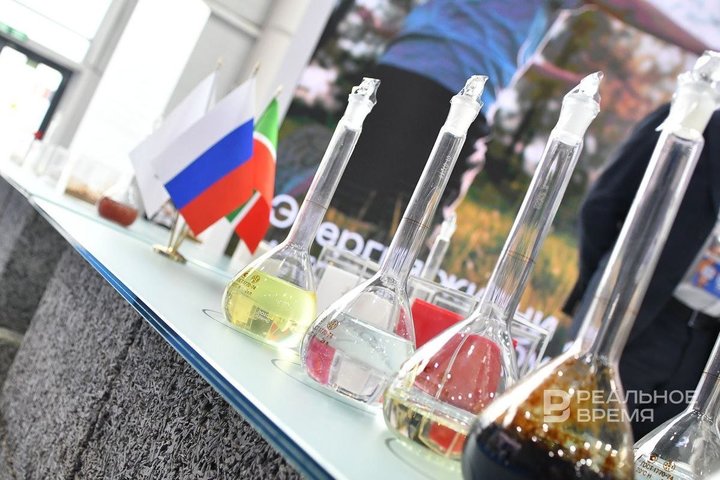
It is interesting to walk through the stands of small companies that came from different parts of the country: here it is a very impressive geography if one marks each represented city with a flag on the map. From Yekaterinburg to Fryazino, from St. Petersburg to Omsk.
Tatarstan cable is installed at the Sayano-Shushenskaya HPP, Russian manufacturers are on the list of customers
But our editorial staff is still attracted to native Tatarstan manufacturers. Tatkabel plant presented industrial samples of power cables with a voltage class from 0.66 to 500 kV at its stand. One of their new developments received the Grand Prix of the competition at the exhibition in the nomination “Best project — technical solution in the field of import substitution in the field of energy and energy efficiency”. This is a 500 kV power cable, which the company launched into mass production just three months ago, at the beginning of 2024. The need to launch the product was dictated by the policy of import substitution in the energy sphere and ensuring technological sovereignty.
Ultrahigh voltage cable is a specific product that is used at the largest energy generating enterprises. For example, it is already being used at the largest Russian hydroelectric power plant, Sayano-Shushenskaya (part of the perimeter of Rushydro). In Tatarstan, an ultra-high voltage power cable will be used in the modernisation of the Nizhnekamsk HPP.
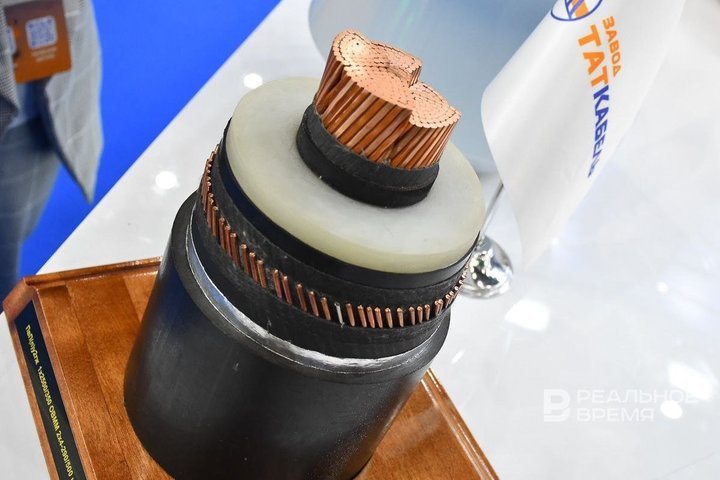
“It is gratifying that the products of our own Tatarstan production are involved in the modernisation project of this Tatarstan facility: our power cable will be connected by couplings manufactured by Energoinnovation PLC, which is also an enterprise from Tatarstan," they told Realnoe Vremya at the enterprise's stand.
Not only equipment manufacturers are represented at the exhibition, but also its sellers. For example, Soyuz-Pribor PLC is a company from Kazan that has been supplying control and measuring devices since the 1990s. At the exhibition, the company presents four areas of its work: thermal engineering devices, gas analysers and flowmeters; radio and electrical measuring equipment; devices for industrial automation; devices for electrical laboratories. Asgat Gayfullin, the head of the sales department, notes the trend for domestic equipment:
“We mainly supply Russian-made equipment, but we also have suppliers from abroad: China or, for example, Italy. The range of our suppliers is expanding, including at the expense of Russian companies. And consumers mostly gravitate towards domestic products.: it is easier to maintain and repair, it is possible to quickly replace components, and technical support is seriously provided for it. So, together with our colleagues, we work for the benefit of import substitution and ensuring technological sovereignty.
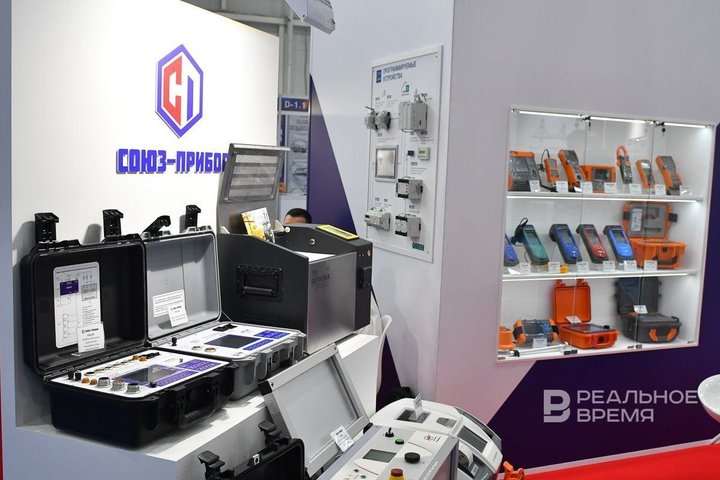
Import substitution of the energy distribution system and mega-battery charging for electric vehicles
The impressive stand of Tavrida Electric company attracts attention: it is large, stands in a place with high traffic and there are always visitors here. The company's central office is located in Moscow, the company develops and manufactures equipment for energy distribution within enterprises. There is a wide range of exhibits on the stand, from switching modules (switches) to ready'made switchgear for substations. The scale of the work depends on the scale of the customer — from a coffee shop to a giant chemical plant. After all, every enterprise in any business sector has its own energy sector, its own energy distribution system.
“We provide a full range of work — starting with the design, ending with the supply of equipment, commissioning, compliance with regulatory documentation, the commissioning of the facility to Rostechnadzor," explains Sergey Lekomtsev, the head of the Kazan branch of Tavrida Electric Volga Region. “In Tatarstan, we work with most large companies: Tatneft, SIBUR, Grid Company JSC, and Vodokanal from Kazan. Of course, now we are trying to expand our niches, to take the places vacated after the withdrawal of Western manufacturers. We attend TatEnergyExpo every year, and we always manage to make new contacts here.”
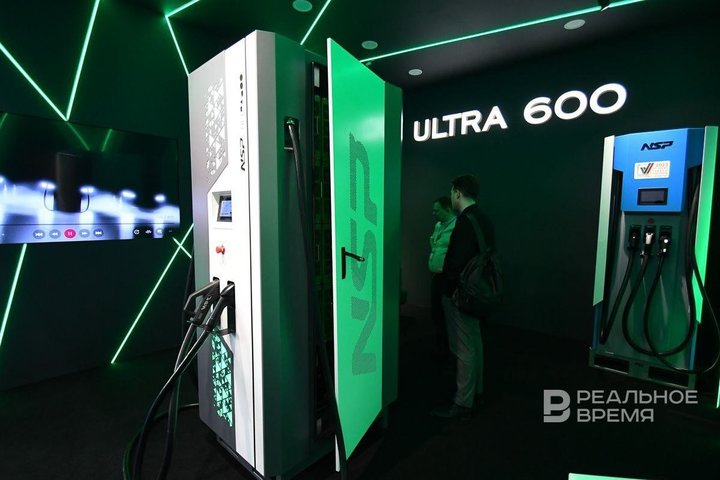
As has traditionally been the case in recent years, much attention at the exhibition was paid to electric vehicles and the infrastructure for charging them. Tatarstan is a platform for the production and development of charging stations for electric vehicles. One of the companies that has been doing this since 2019 is Tekhnopraktika (part of Energorazvitie group of companies). At the exhibition, they presented their new development — a 600 kW power station. Ayaz Galeev, the director of the company, recalls: three years ago, the most demanded capacity for charging stations was 40 kW, last year the minimum bar was raised to 150 kW. Charging is also carried out for electric buses with a capacity of 300 kW. But the industry does not stand still, new, more technologically advanced and powerful electric vehicles are emerging — and they require, accordingly, a more convenient, technologically advanced and powerful charging infrastructure.
“The technology is new for our country," Ayaz Galeev explains. “We try to make the components ourselves, to replace their production on our site to the maximum. So far, only a considerable part of the electronic “stuffing” has to be purchased, but this is a common problem in all industries: chips have not yet been localised in Russia. This charger is a prototype, laboratory tests have shown its full functionality. But to test it in practice, we are now looking for an electric car that requires such power. After that, we will conduct full-scale tests. Today we showed the novelty for the first time and we see interest in it.”
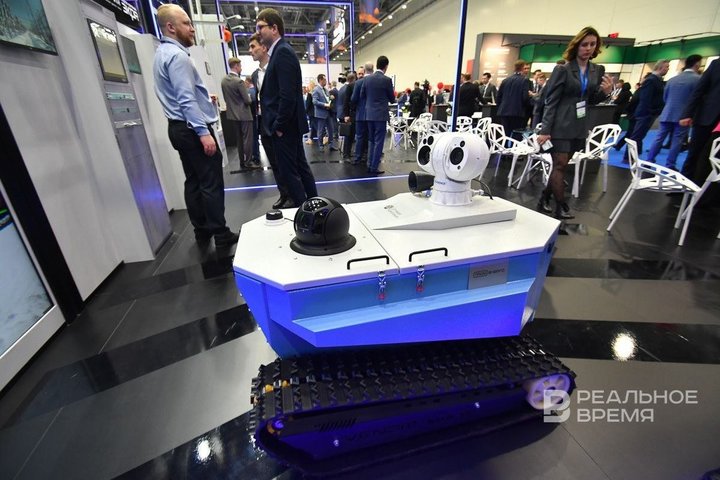
So, the exhibition is working. The organisers expect to see 10,000 people among the guests. Serious players from one of the most important sectors of the economy gathered in Kazan again. The trends are clear: import substitution of energy systems, their intellectualisation and education in the energy sector. And the exhibition once again shows that everything works out!